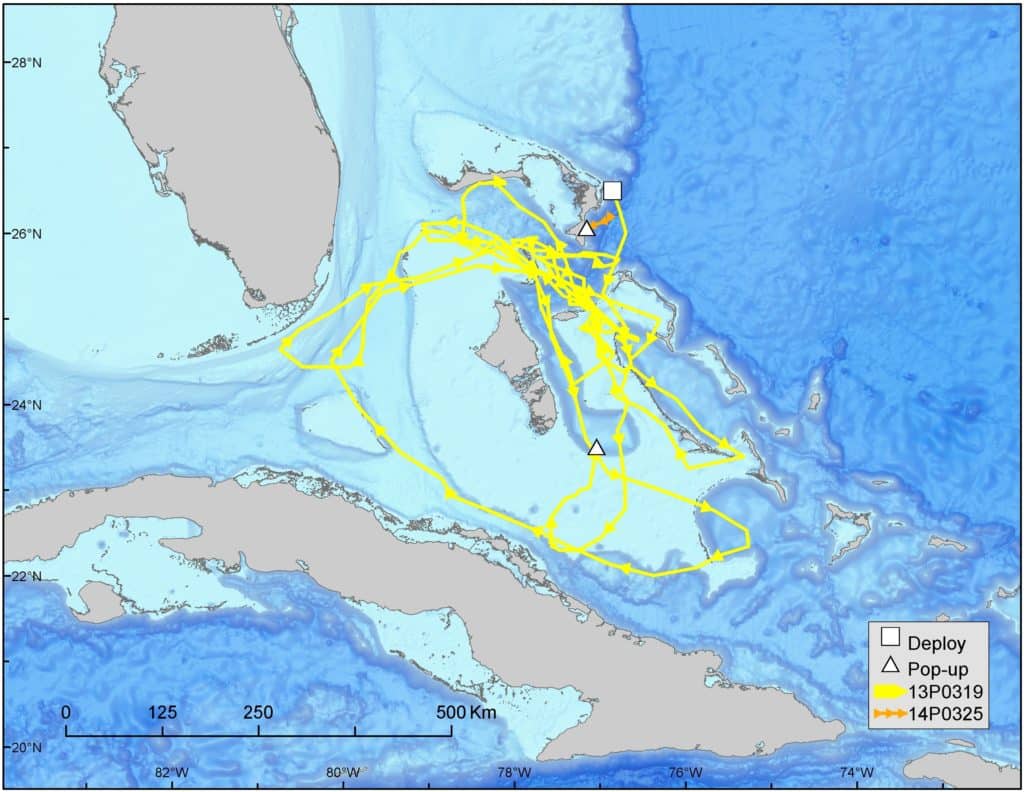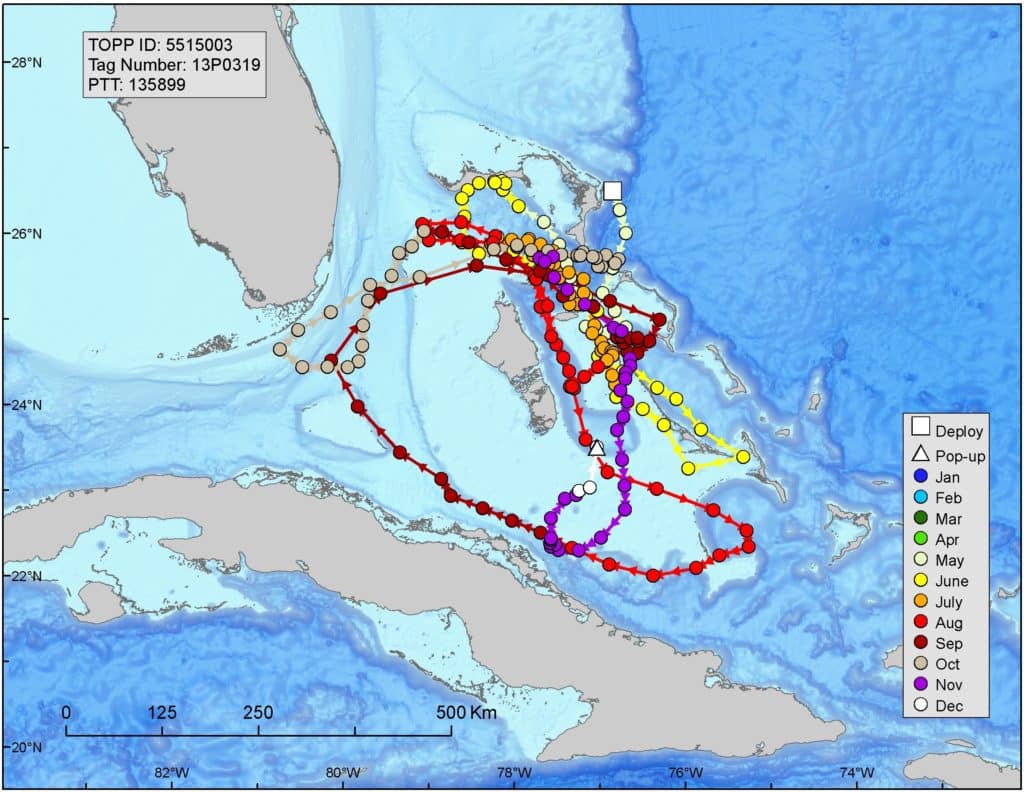
On May 14, 2015, during the second day of fishing in the Bahamas’ 2015 Custom Shootout, satellite-tag sponsor Todd Reaves reeled in an estimated 100-pound blue marlin while fishing from his boat Soul Candy. Capt. Brian Speedy says the “fish was small, the fight quick, and the release healthy,” as the blue swam away with a satellite tag, making it part of the IGFA Great Marlin Race (IGMR). After 203 days, the tag popped up at the southern tip of the Tongue of the Ocean, just 180 nautical miles from where it had been tagged in the Abacos. However, during this time, the fish swam far more miles, a distance we estimate to be 2,340 nautical miles!
Only recently, after other marlins’ tags popped up could scientists announce the winner. Congratulations to Todd Reaves and Team Soul Candy for winning the 2015 Abaco Islands, Bahamas, IGMR.
As you can see by the map, the fish took a meandering route through the Bahamas, spending some time off the northeast coast of Cuba in August and September and then passing by the Florida Keys in October. The majority of its time was spent between the surface and 100 m (328 feet) in water temperatures ranging from 79 degrees to 86 degrees F. However, deeper dives frequently occurred, with the deepest dive to 1,680 ft, where the water temperature was just 55 degrees.

During the first Bahamas IGMR in 2014, the marlin moved significant distances away from the Bahamas, whereas Reaves’s fish remained relatively close to the islands for the entire duration of the tag deployment. While it’s difficult to infer the reason for this, potential explanations include environmental differences between the two years, differences in the amount of localized prey available, or biological differences such as whether the fish were reproductively active.
We are very excited to add data from Atlantic blue marlin to the IGMR database and hope to increase this data set during the 2016 Custom Shootout May 11-14. These data sets help us to learn about billfish behavior in an effort to increase their conservation and protect the sport we love for future generations of fishing.
For information on sponsoring a satellite tag, please email me.








